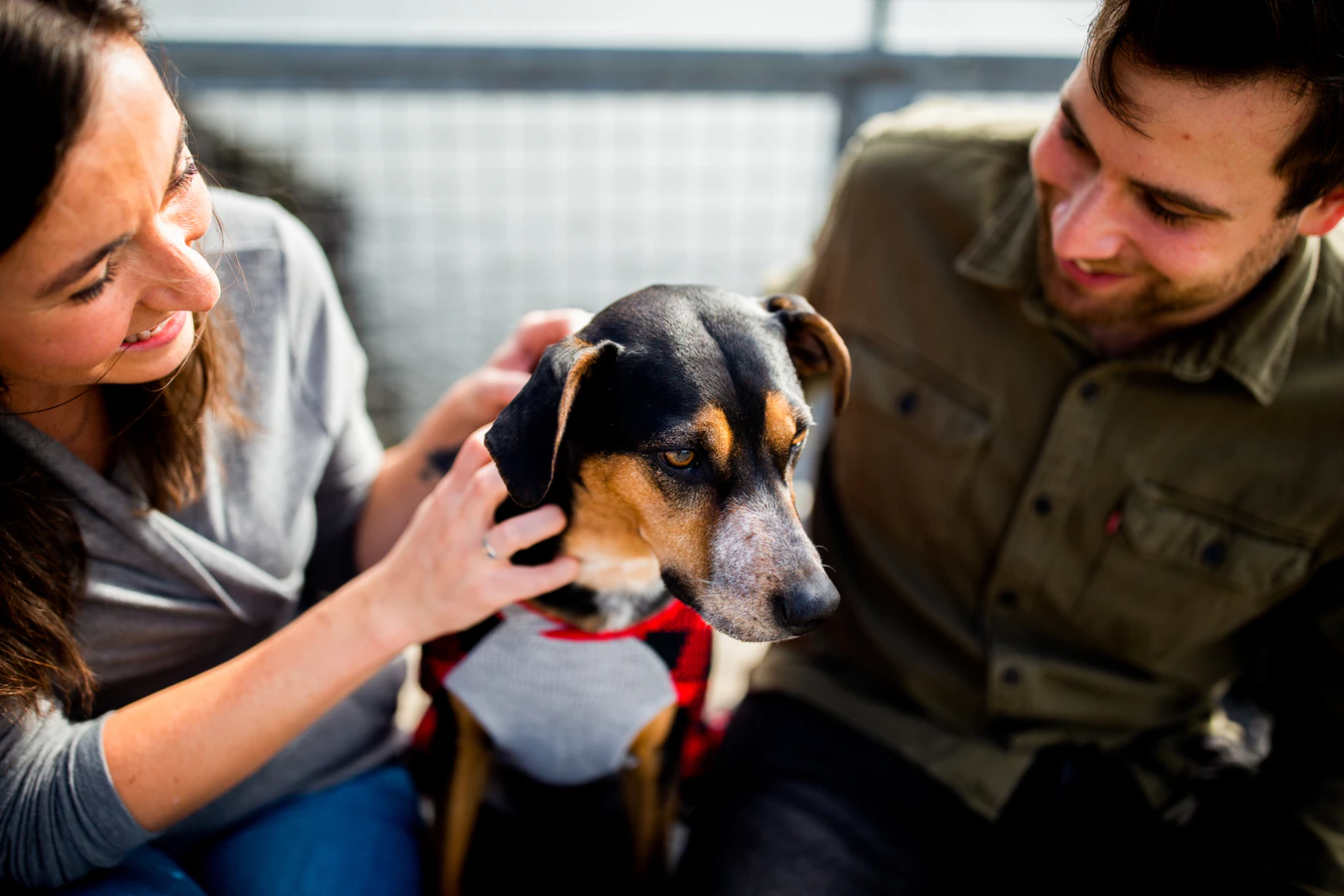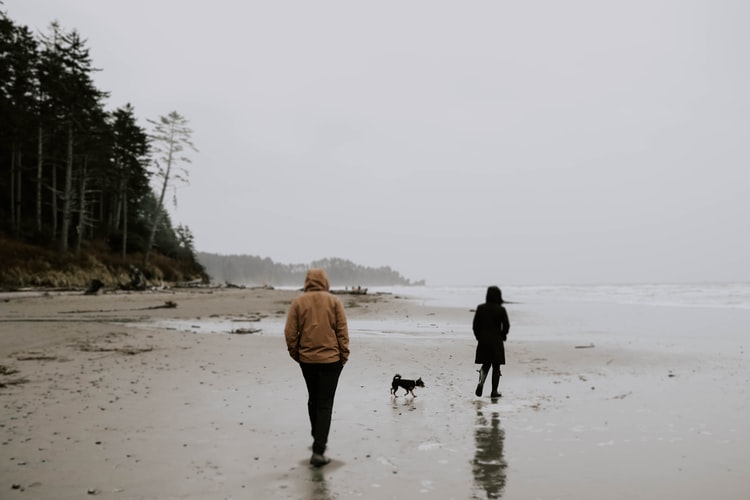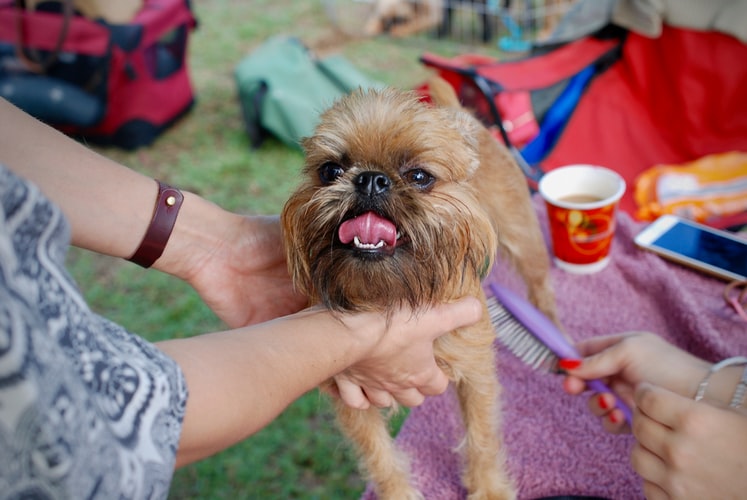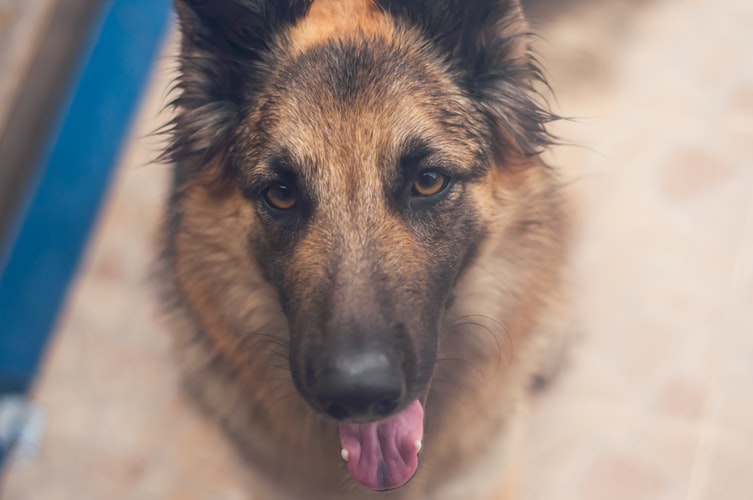Pets
Kuoser Dog Jackets Best shelter For Dogs

Is it a counterproductive fashion to shelter dogs, especially when they are urban and domestic? For some time now, urbanites in large and even medium-sized cities have seen a growing number of warm dogs playing in parks . Among other things because there were not too many “house” dogs and the animals used to live in the vicinity of the houses, managing as best they could. But precisely for this reason, putting on dog jackets when the cold is pressing could be, in addition to a fashion, progress in improving the quality of life of our colleagues.
In this regard, veterinarians advise the coat only for certain dogs or in certain circumstances. In cases of rain these breeds can use a waterproofing agent to prevent the wet cold from getting on their skin. Some dogs may need dog jackets, but there are many people who do not think about the welfare of the dog when putting it on but about the aesthetics. Kuoser dog jackets are the most suitable for your dog.
Advantages of the kuoser dog jackets:
In any case, the recommendations of most experts are generic and trust the use of kuoser dog jackets to the common sense of their humans , without ruling out that this type of garment may have some additional advantages if, and only if, bad weather is pressing. Some of these are:
Protection against parasites: although they are not frequent in winter, with the undeniable climate change dangers such as ticks or the leishmaniasis mosquito can last even in winter. With a kuoser dog jackets, especially if we live in humid areas or forests and the dog is young and likes to get into the bushes, we give it additional protection.
A jacket for small or short-haired dogs: as the veterinarian pointed out, short-haired breeds, especially if they are small animals, which regulate heat loss worse, can get cold when we go for a walk and we stand still. If they are going to be in continuous activity they will generate heat and the coat will not be necessary.
Protection against rain: rain can also soak them and increase the feeling of cold. In the case of breeds with undercoats, such as husky, golden, labrador, etc., it is not necessary, although we must dry them well when returning home.
Protection against scratches or possible bites : short-haired dogs without undercoat have an additional layer of protection against being bitten on the back of other dogs or against scratches from branches, etc.
It can be hot: up to certain limits, dogs cope better with cold than heat, especially since their body temperature is two degrees higher than ours: 38ºC. In addition, if they have long hair and undercoat, they are perfectly adapted to the powerful cold, so an additional coat can make them too hot, and if they do intense exercise and do not have water nearby, they can have a hard time.
Choose the right size of kuoser dog jackets: A poorly fitted or too tight coat on dogs with short, scant hair can lead to rubbing and therefore sores. If we put coats on them, they should always stay close to the body but not tight. Let’s make sure it’s the right size.
Healthy Pets
How often do you walk your dog

Nowadays, walking your dog is the most natural thing in the world. Yet this is something of the past decades, when the dog became our family friend.
Where does our outlet habit come from?
How often should you actually walk a dog?
And what rules apply for this?
In this article we will give you all the information about walking your four-legged friend.
Why walk your dog?
Walking your dog seems like an all-time habit. You will think. Doesn’t he just have to pee and defecate? And how else does he get enough exercise?
But many of our dogs were bred many years ago for some task in our society. No matter how early!
First we had wolves and wolfdogs to hunt with. Later we had canids as guards, keepers and even pack animals.
Enough to do, for the dog of the past! And peeing and pooping, they did that in between somewhere in a bush or corner. Nobody cared about that.
But today most of the dog’s tasks have been taken over by machines and other modern developments. This left only the luxury position of pet for our four-legged friend.
Now, of course, there are dogs with tasks. Think of guide dogs, police dogs and of course the house and yard guards. Yet these are also held differently than in the past.
Just walking out the door for a visit to the toilet or a round about is no longer possible in our busy, modern society. So we let our dogs out.
How often should you walk a dog?
We usually walk our dog so he can go to the bathroom and get plenty of physical exercise.
Nowadays we see that dogs are often taken out three times a day. Early in the morning, noon and late at night. This is on average every 6 to 8 hours.
But consider that you can only pee or defecate once every 8 hours. And only has a few minutes to do so.
Of course your dog will get used to a certain walking rhythm. But that does not have to mean that urinating once every 8 hours is enough.
Especially for dogs that are not allowed to pee in the garden, making a pee and poo round once every 4 to 6 hours is a nice habit.
Holding stools for a long time can cause health problems. From bladder stones to nasty infections.
How much exercise does my dog need?
In addition, every dog needs sufficient exercise for a good condition and health. However, this differs per breed.
For example, walking for an hour makes a Chihuahua completely tired, but a Border Collie is far from wanting to go home.
Therefore, read carefully about the specific breed needs and observe your dog.
Appropriate movement also has to do with the condition of the body. Is your dog sick , old, pregnant or is he still a puppy? Then of course other rules apply.
These individuals can take it easy, and at temperatures above 20 ° C . For polar dogs, a temperature limit of 15 ° C even applies!
The type of exercise must also suit your dog.
Does your dog have an increased risk of hip or elbow dysplasia ? Climbing stairs, slippery floors, wild games with sharp curves and hard stopping times are not recommended.
But walking or swimming is ideal for these dogs !
Where can you walk a dog?
Have you figured out what to do with your dog? Always keep to the rules of the environment.
In all municipalities in the Netherlands, the dog must be on a leash in built-up areas. There is only an exception to this when you enter an area with the official signs “dog play area” or “loose run area”.
Outside the built-up area, dogs are often allowed to run free, but always keep to the signs of the municipality.
Read the given information carefully. Sometimes running free is only allowed at specific times or during special months of the year.
An example of this is the beach. Here dogs are often allowed between October 1 and May 1 loosening freely .
However, between May 1 and October 1, the busier summer months start with many visitors. Then adjusted times apply for running free.
Dogs are not allowed at all in some areas. This is indicated by means of a prohibition sign.
Another special situation takes place in natural areas. To protect wildlife in nature, dogs often need to be on a leash here. Sometimes they are not even welcome at all.
When entering these areas, the four-legged friend must be kept under control by the owner at all times.
The game can be hunted and cause serious accidents. The breeding area of certain birds and shelters for animals such as foxes, badgers and rabbits can also be disturbed in such a way that this has a detrimental effect on the natural population.
Is your dog going after game after all? Or can you not prove that he is perfectly under appeal? Then it can be concluded that you are present in the nature reserve with an ‘unauthorized hunting tool’. This is punishable.
For this reason, it is always advised to keep wind and hunting dogs on a leash in a natural area, to avoid unpleasant situations.
Dog Breeds
The Brussels Griffon An adorable breed.

Intelligent, affectionate, loyal, curious … These are just some of the virtues that the Griffon of Brussels gives us. Definitely, this breed falls in love.
About ten years ago, seeing an Ewok walking by my side was the strangest thing.
I remember the people who were walking down the street at that time, stopping and hearing the children exclaim: Look, Dad! That dog has a beard !!
Fortunately, every day the Brussels Griffon is better known in Spain. An example of this is that a chain of stores in Spain has made a television spot in which a griffon appeared waiting in the arms of its owner, while the Star Wars soundtrack was playing off.
The Brussels Griffon is a small breed dog that usually weighs about 3 to 6 kg and, yes, it does look a lot like the Ewoks that appear in the Star Wars movie.
To find out more about its history: its origins date back to the 19th century in Belgium. These dogs were used to scare away rats that roamed in stables in Europe. In addition, they helped guard the house and kept its owners company.
This breed usually attracts a lot of attention for its monkey face. They have a very peculiar little face, with a flat nose (they are brachycephalic), ears attentive to everything and round little eyes that speak to us.
There are three varieties depending on the type of hair the specimen has: The Brussels Griffon, which has long, hard and red hair; the Belgian Griffon, with long, hard, black hair and, finally, the Petit Brabançon with short, reddish hair.
Obviously, the one that gives the least hairdressing work is the Petite Brabançon, for having short hair. On the contrary, the Brussels griffon and the Belgian griffon have to have their hair worked every few days using the stripping technique.
According to the FCI standard, the head must be large, broad and round, with a very short muzzle, a very marked stop and a black nose. The eyes are large, round and dark. Small ears are rewarded. The tail should not curl up, it should be set high and generally carried raised. Griffons have a prominent lower jaw (prognathism), but they should never show their teeth or tongue when they have their mouths closed, as this is considered a breed defect.
This breed has some care that should be noted. We must take good care of our eyes . As they are quite bulging, they are very prone to ulcers, so we must carefully monitor the ocular structure and check that they do not have transparent white spots, which can be a symptom of an ulcer. If our griffon suffers from an ulcer, it is very important to go to the vet as soon as possible so that it does not deepen, reaches the cornea and the damage caused may be greater.
Also, we must ensure that hairs are not accidentally introduced into the eye, since permanent contact can damage the eye cells and lead to keratitis or distichiasis (abnormal birth outside the usual lash line and rubbing them with the cornea).
Another important aspect to note is that the Brussels Griffon is quite delicate when it comes to heat stroke. Like all brachycephalic breeds, we must pay special attention in summer so that our pet does not suffer the dreaded heat stroke.
Regarding their character, it is important to note that they tend to suffer from separation anxiety, so those who are considering having a griffon should make sure that they are not going to leave their pet alone for a long time. They love company and pampering. Sometimes they can be fearful in front of young children. This, as always, will depend on how we train our dog. They can be scared by the noises, unexpected movements and games that they give them, but they are very good with them and, at most, what they will do is run to the opposite side. They have a very faithful character, they will not separate from you for a single minute. They will be your shadow.
Dog Breeds
THE GERMAN SHEPHERD AN OBEDIENT DOG

It is perhaps one of the most impressive dogs in the world: the German Shepherd. He is capable of anything because of his incredible intelligence … During the First World War he was used to perform various tasks for the German army. Today his intelligence is fortunately mainly used by owners who want to teach him tricks. Read on and discover everything about this beautiful dog!
Its origin
As you can guess, the German Shepherd comes from Germany, where they call him the Deutscher Schäferhund . Deutscher Schäferhund can be translated as “German Shepherd Dog”. The German Shepherd Dog was created because a soldier was bored while keeping watch . He looked out on a large area of pasture, in which he saw all kinds of different dogs . He was amazed by what these dogs could do. After seeing that these dogs could move a whole flock of sheep , he decided to leave the army and breed this dog breed. Because all the dogs in the pasture were so different, the soldier decided to imagine one type of dog that would be perfect both in appearance and inwardly. By the way, did you know that the first guide dog for the blind was a German Shepherd named Buddy ?
Personality and Behavior
Because the German Shepherd is used as a sheepdog, it is very easy to train . It is of course very important that your dog is obedient when you use it with the sheep. In addition to a good sheepdog, you can also use the German shepherd at home as an alarm system. This dog breed is very territorial and will bark immediately if a burglar enters your home. Due to this territorial behavior, the German Shepherd can also quickly show suspicion when encountering strangers.
The German Shepherd is a very loyal dog. He really loves his owner and will always try to do what you expect from him. Just because he is so affectionate, he is not the best dog to leave home alone all day while you go to work . It’s important to keep this in mind before bringing a German Shepherd into your home.
It is also very important to give your German Shepherd a good upbringing . If you give him a good upbringing, with or without the help of a dog school or an expert experienced with this breed, he will always do what you expect him to do! Please note, a good upbringing does not immediately mean a strict upbringing! Your German Shepherd will learn much faster if you reward him for positive actions than if you yell at him if he does something wrong. If you socialize the German Shepherd at a young age and allow it to interact with other dogs , there is no problem whatsoever. The same goes for other pets such as cats. Also with childrenthey have known all their lives they have no problem. This breed is certainly also suitable as a family dog !
It is a highly intelligent breed that can teach you any trick in no time! For a German shepherd the sky is the limit. Maybe you can teach your dog to urinate on command using the step-by-step plan in this article ? Today, the German Shepherd is still often used as a guide dog for the blind , which shows its good-natured nature. Other jobs that can be perfectly performed by this breed are that of a police dog, tracker dog, or guard dog . For these jobs, the courageous nature of the German Shepherd is really perfect. This dog is really not afraid of anything!
Care and nutrition
The German Shepherd has an undercoat, which allows its coat to tangle more easily than the coat of some other dog breeds. To avoid this, it is best to give your dog a thorough brushing twice a week . At certain times of the year you will notice that your German Shepherd sheds even more than usual. It can be very helpful during these times to give your German Shepherd more brushings than usual so that less hair ends up in your house. In addition, these brushings also help to keep your dog’s coat beautiful and prevent tangles! Do you have no idea exactly how to tame that coat? Then you find here a few tips!
The German Shepherd is a dog that needs a lot of exercise . He loves to take long walks with his owner and if you give him daily, he can also live in a house or apartment without a garden. If you don’t give him this move, your dear dog might get very nervous or let off steam on your furniture. This dog is very sporty , which means that you can also take it with you when you go jogging or going for a bike ride!
What a German Shepherd needs in terms of nutrition varies from dog to dog. It depends on what he does in daily life : is the German Shepherd a police dog or a family dog? If he performs a job as a police or tracking dog, he needs a lot of energy in his diet. When choosing food for your German Shepherd, you must therefore think carefully about the situation with your dog. With this large dog breed, it is also important that obesity is avoided in order to give the hereditary joint disorders as little chance as possible. If you don’t know what to do, don’t hesitate to ask your vet for help! Do you think your German Shepherd might be too fat? Then you find here an article that might help!
Do German Shepherds suffer from health problems?
Like all dog breeds, German Shepherds also have typical ailments linked to the breed. Since it is a very large dog, German Shepherds have regularly suffer from diseases of the joints such as hip and elbow dysplasia . Hypothyroidism is a condition of the thyroid gland in which it works too slowly due to a lack of active thyroid hormone. Von Willebrand ‘s disease is an inherited blood disease that is common in German Shepherds.
It is important to buy your puppy from a good breeder who will perform preventative testing to prevent these hereditary conditions in their puppies. If you have chosen a good breeder and you have your dog regularly preventively checked by your vet , the chance of these typical ailments is immediately much smaller! These small measures also ensure that your German Shepherd can easily reach the average age of 12 !
The appearance
The German Shepherd is a dog with many muscles : its neck, back and loins are very strong and muscular. It has a long tail that has longer hair on the bottom than on the top. The German Shepherd is a large breed of dog. The height at the withers is between 55 and 65 centimeters high. Weight depends on your dog’s gender. Females weigh between 22 and 32 kilograms , while males have 30 to 40 kilograms weigh. A German Shepherd has very dark eyes. His pointed ears are pointed with the auricle facing forward on his head.
The German Shepherd’s coat is black with reddish brown, brown, yellow or even bright gray markings . The German Shepherd’s hair is short on the head, limbs and toes. He has longer hair on the neck and the back of the legs.
How do you choose a German Shepherd puppy?
Are you convinced that such an intelligent dog fits perfectly in your family? Is there usually someone in the house so that this affectionate dog doesn’t sit alone? Do you have enough time to give him his daily exercise? Perfect! Then the German Shepherd might be something for you. Now you can start looking for a good breeder. But how do you know exactly who is a good breeder and who is not? Don’t worry, we’ve created this checklist to help you!
The average price for a German-Shepherd puppy is usually around 850 euros . Always be on the lookout if you come across a seller selling puppies for a much lower price! There is usually a reason for this cheap deal. Is the dog not a full German Shepherd? Do the puppy’s parents have a history of hereditary conditions? Be sure to ask the breeder for the pedigree and the official test results to check such things before buying a dog!
With a German-Shepherd, it is of immense importance to pay attention to the parent animals during your visit to the breeder . Are they anxious or rather social? How do they respond to you as a visitor in their home? The fact is that a German Shepherd can become aggressive if it has not been socialized early enough and has not received training. These dogs are often very nervous too . Does the breeder have several litters in his house at the same time? Then there is a good chance that you are dealing with such dogs. The breeder does not have time to train all puppies at the same time and to learn everything they need to know as a dog.
Usually you can distinguish a good breeder from a bread breeder by the interest they show in you and your family . A good breeder would prefer to know everything about the future family of his puppy, so that he is absolutely sure that you will give a golden home. Some breeders are less concerned with the fate of their animals and are mainly interested in the money he can earn with his puppies. Does a breeder ask you a lot of questions? Then that is certainly a good sign!
-

 Apps1 year ago
Apps1 year agoWhy is Everyone Talking About Hindi Keyboards?
-

 Social Media1 year ago
Social Media1 year agoWho is Rouba Saadeh?
-

 Apps1 year ago
Apps1 year agoThings you need to know about Marathi keyboard today
-

 Apps1 year ago
Apps1 year agoStuck with Your default Bangla keyboard? Isn’t it time for a change?
-

 Games1 year ago
Games1 year agoTop 7 Popular Puzzle and Card Games for Relaxing Your Brain on Mobile, Featuring Solitaire
-

 Social Media1 year ago
Social Media1 year agoMati Marroni Instagram Wiki (Model’s Age, Net Worth, Body Measurements, Marriage)
-

 Entertainment1 year ago
Entertainment1 year ago12 Online Streaming Sites that Serve as Best Alternatives to CouchTuner
-

 Entertainment1 year ago
Entertainment1 year agoMovierulz Website: Movierulzz 2021 Latest Movies on Movierulz.com
